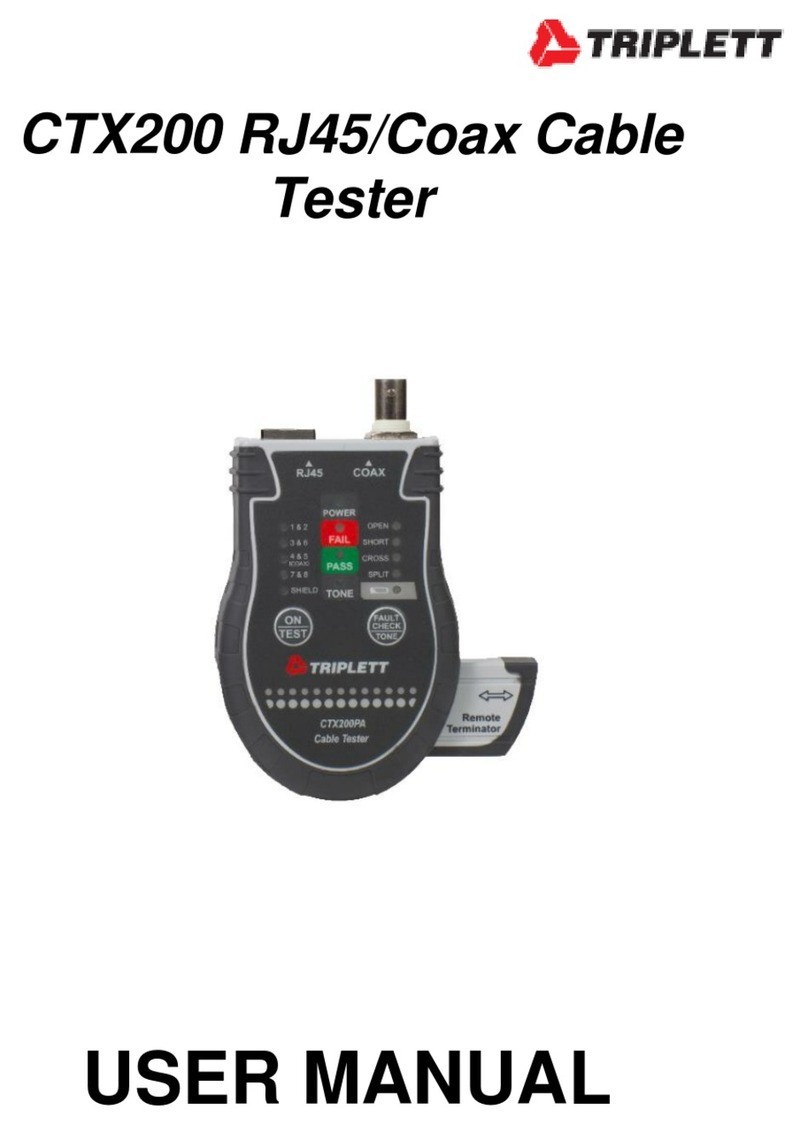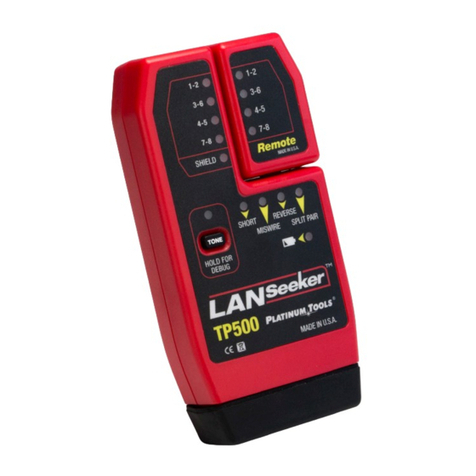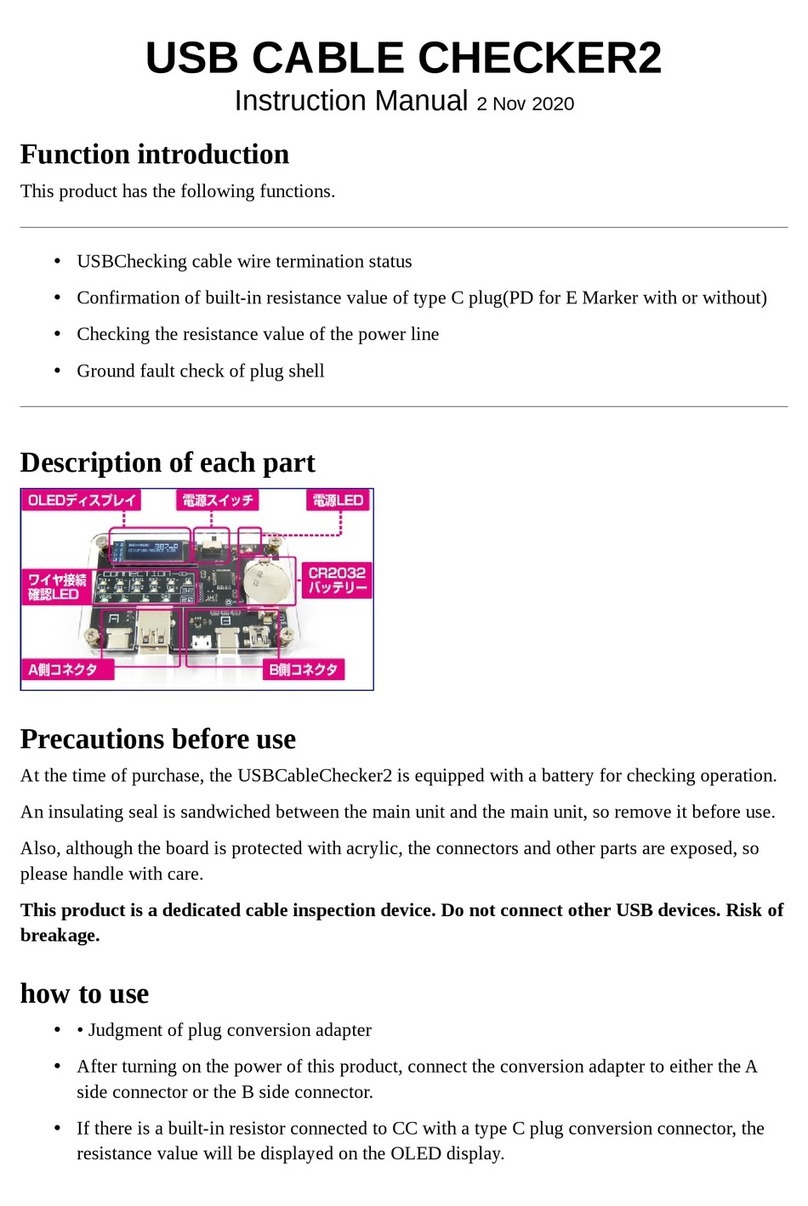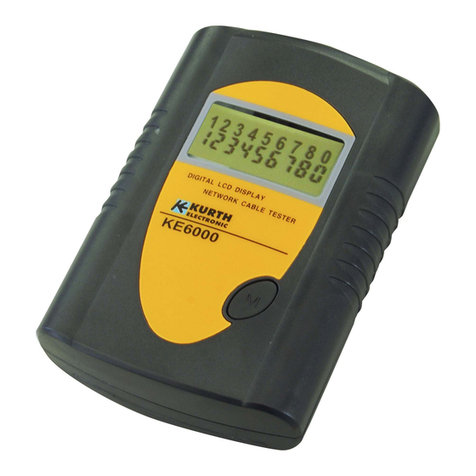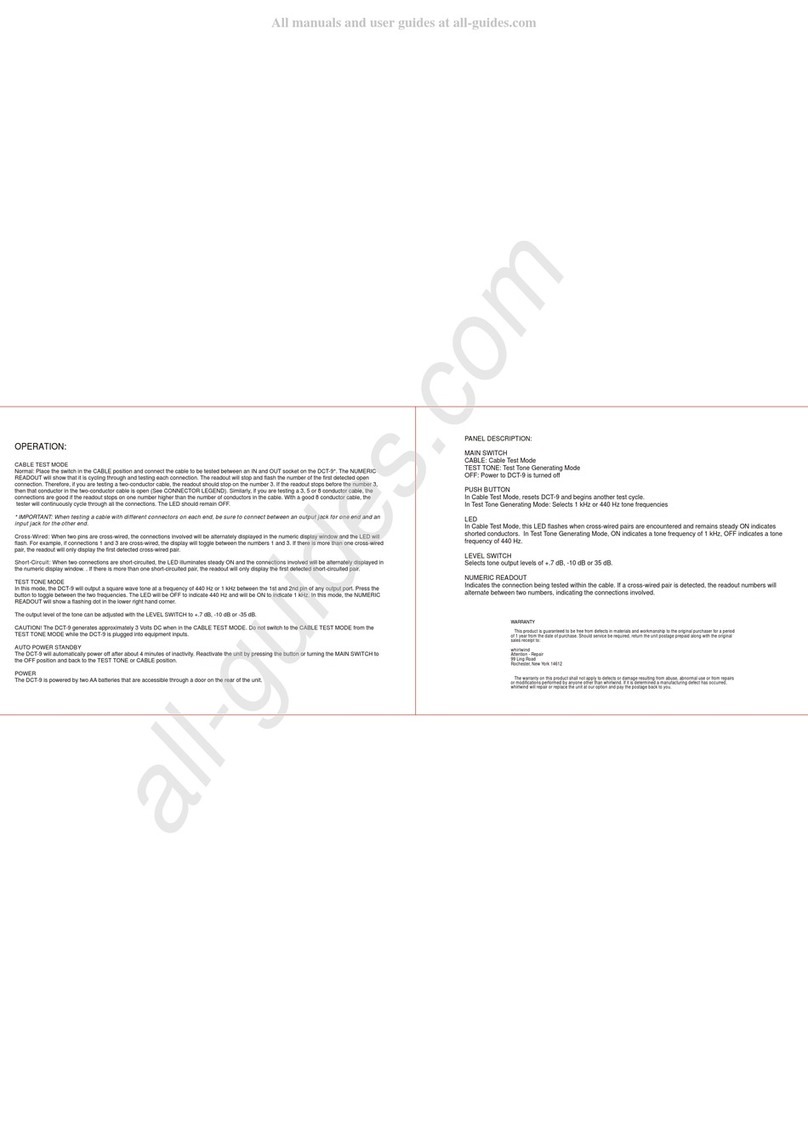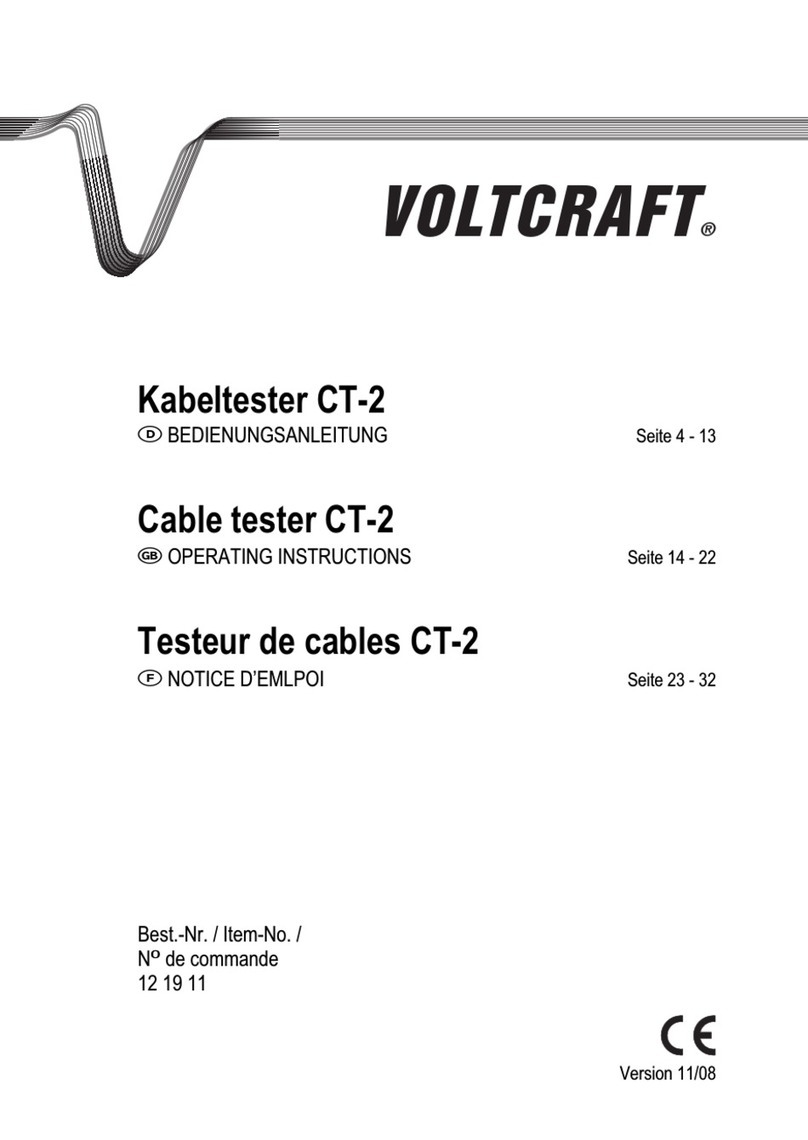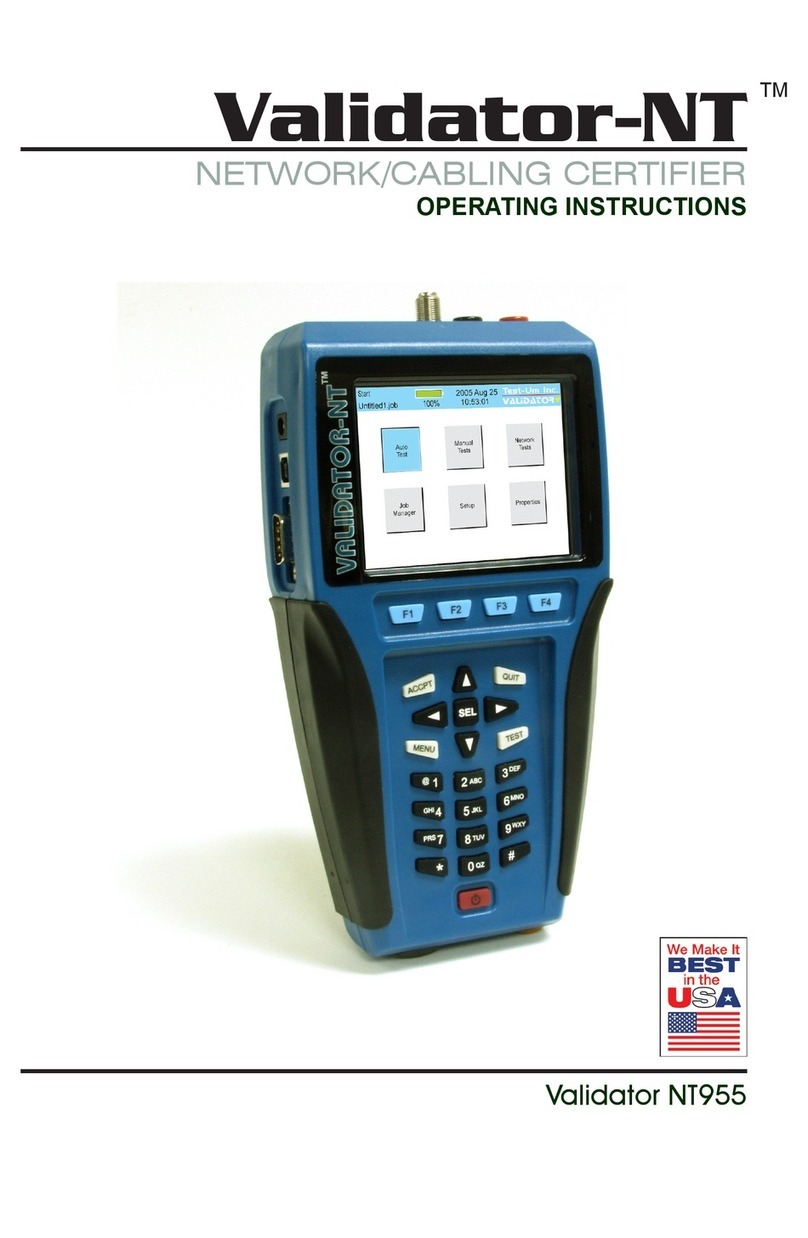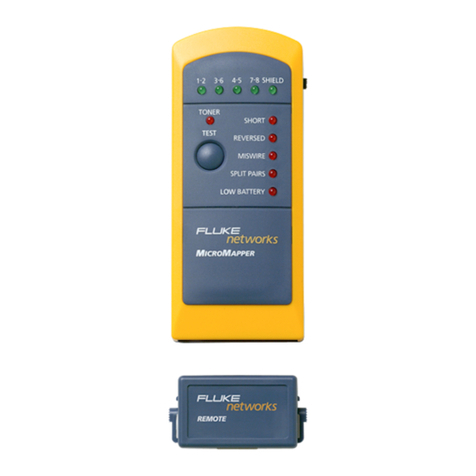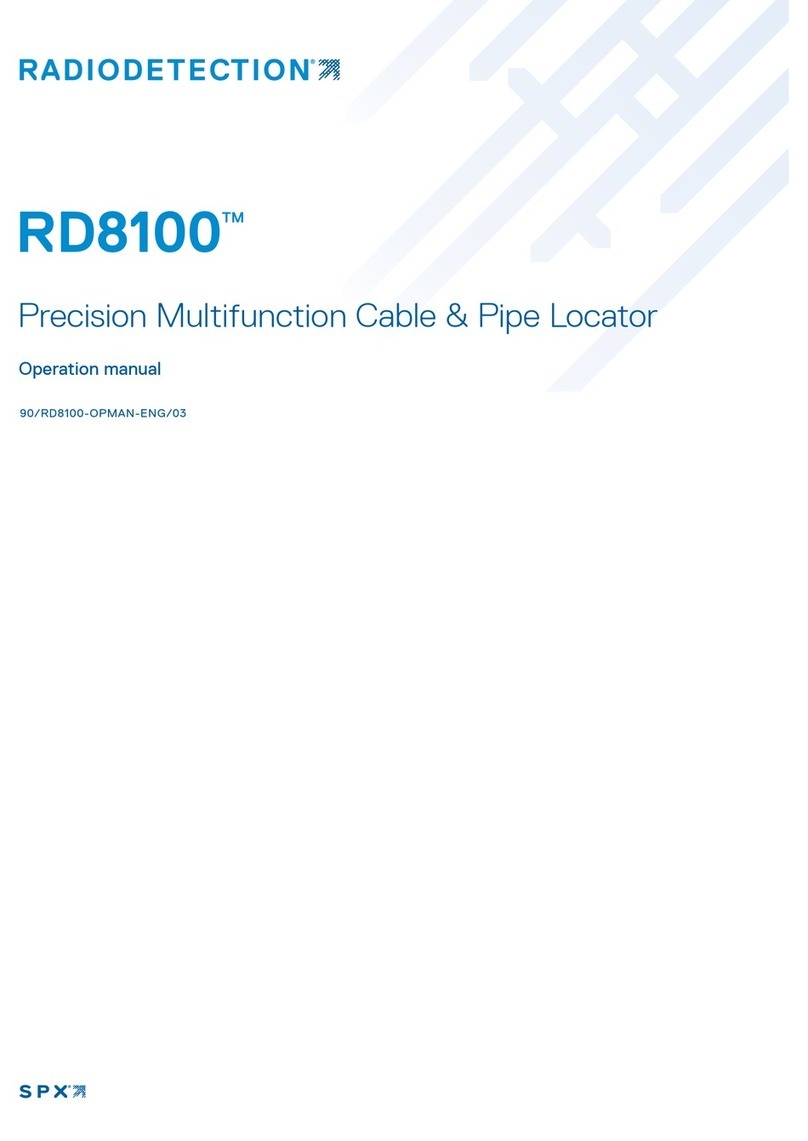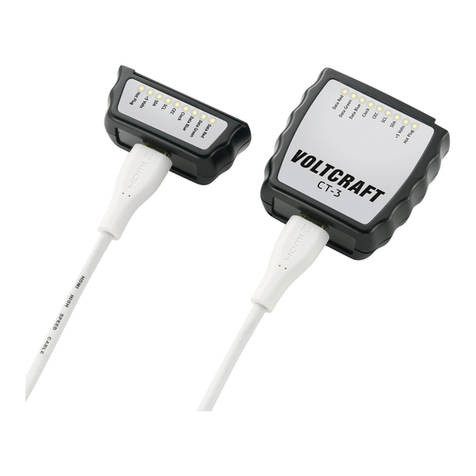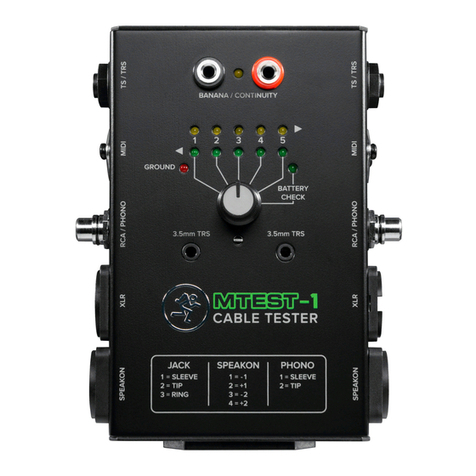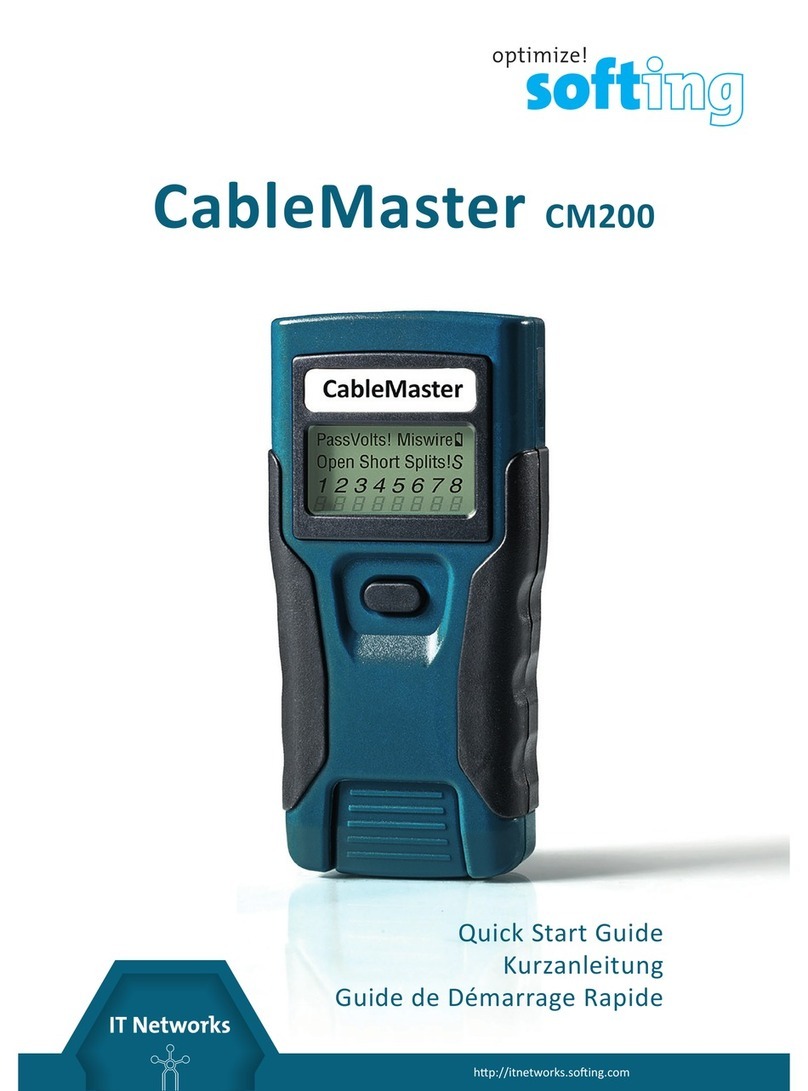Quick Start Guide for AV3680A Handled Cable & Antenna Tester
【FREQ/DIST】: used for measurement parameter settings such as frequency parameter, signal standard,
distance parameter and velocity factor etc.
【SWEEP/SET】: used for measurement parameter settings such as trigger mode, scan mode, scan time,
scan points and average / bandwidth etc.
【TRACE】: Realize contrastive function of memory trace and current data, including arithmetical
operation such as subtraction and division etc.; or store the current data as trace in memory.
【AMPTD】: used for setting display area of Y-axis.
【Marker】: realize functions of marker, including settings like marker ON/OFF, marker mode, peak
search, and marker drag.
【CAL】: realize calibration, including calibration mode, calibration status ON/OFF and selection of
calibration kit models.
【STORE/RECALL】: used for file operations such as store and recall of measurement state, store and
recall of measured trace, screen capture, storage location and file copy etc.
【Limit】: realize limit functions, including limit ON/OFF, alarm ON/OFF, limit line edit, store / recall
and so on.
【Run/Hold】: used to switch between the results of consecutive switch and keeping current switch of
tester.
【MEAS】: Measurement format setting and single / double window switching etc.
【System/Local】: When the Tester is in local operating mode, it is used for setting system status, such as
mode switching between antenna and feeder line measurement and power test, setting of date, time, power
saving mode, viewing the product serial number and instrument applications version number etc.; when the
Tester is in control mode, it is used for switching to local operating mode.
Numerical (character) key: used for inputting numbers or characters
【↑】and【↓】: Represent up and down respectively and used to control step or select current options.
【←】backspace key: used to delete the last entered number or character.
【Cancel】: Used to cancel parameter setting and close the input tag.
【Enter】: is used to confirm parameter settings.
LED indicator: with yellow and green two colors, the physical state of the instrument corresponding to the
color is as shown in the following table.
Table 2.2 LED Status Description
